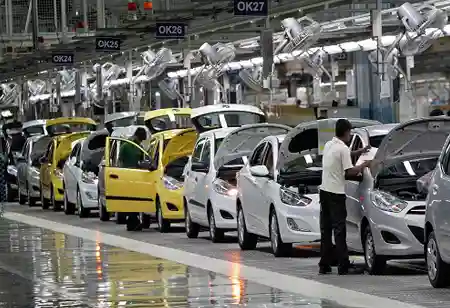Thank you for Subscribing to Auto Business Outlook Weekly Brief
Revolutionizing Auto Part Manufacturing: Innovations Driving the Future
In the dynamic world of automotive technology, manufacturing auto parts plays a crucial role in shaping the industry's future.

By
Auto Business Outlook | Tuesday, June 20, 2023
Stay ahead of the industry with exclusive feature stories on the top companies, expert insights and the latest news delivered straight to your inbox. Subscribe today.

Auto part manufacturing is undergoing a rapid transformation driven by a wave of technological advancements.
FREMONT, CA: In the dynamic world of automotive technology, manufacturing auto parts plays a crucial role in shaping the industry's future. As the demand for more advanced and efficient vehicles grows, so does the need for cutting-edge manufacturing techniques and processes. This article explores the latest innovations in auto part manufacturing, propelling the industry forward and driving the next generation of automobiles.
1. Additive Manufacturing:
One of the most revolutionary technologies impacting auto part manufacturing is additive manufacturing, commonly known as 3D printing. This technique allows manufacturers to build complex parts layer by layer, using materials like plastics, metals, and composites. Additive manufacturing offers several advantages, such as reduced production time, cost-effectiveness, and design flexibility. It enables the creation of lightweight parts with intricate geometries, improving fuel efficiency and overall vehicle performance.
2. Robotics and Automation:
Automation has become a cornerstone of modern manufacturing, and the auto industry is no exception. Robotics and automation systems have significantly enhanced productivity, precision, and safety in the manufacturing process. Robots are used for welding, assembly, painting, and quality control tasks. With progress in machine learning and artificial intelligence, robots can now adapt to variations in the production line, improving efficiency and reducing errors.
3. Advanced Materials:
Innovative materials are transforming the capabilities of auto part manufacturing. High-strength alloys, carbon fiber composites, and lightweight polymers replace traditional materials, leading to stronger, lighter, and more durable components. These materials contribute to weight reduction, resulting in improved fuel efficiency, reduced emissions, and enhanced vehicle performance. Moreover, advanced materials offer superior resistance to corrosion and wear, increasing the longevity of auto parts.
4. Smart Manufacturing and Internet of Things (IoT):
Integrating smart manufacturing and the Internet of Things (IoT) revolutionizes auto part production. IoT-enabled sensors embedded within manufacturing equipment gather real-time data, providing insights into machines' performance, condition, and maintenance needs. This data-driven approach enhances operational efficiency, reduces downtime, and enables predictive maintenance. By leveraging IoT, manufacturers can optimize production processes, detect anomalies, and improve overall quality control.
5. Digital Twins and Simulation:
Digital twins, virtual replicas of physical products or processes, are gaining prominence in the auto part manufacturing landscape. By simulating various scenarios and conditions, manufacturers can analyze the behavior and performance of parts before physical production, reducing the need for costly prototyping. Digital twins also facilitate the optimization of manufacturing processes, ensuring higher precision and reducing material waste. This technology enables manufacturers to accelerate innovation, streamline production, and deliver high-quality auto parts.
Conclusion:
Auto part manufacturing is undergoing a rapid transformation driven by a wave of technological advancements. Additive manufacturing, robotics, automation, advanced materials, smart manufacturing, IoT, and digital twins are reshaping the industry and propelling it toward a future of innovation and sustainability. These technologies improve the efficiency and quality of auto parts and contribute to lighter, safer, and more fuel-efficient vehicles. As the automotive industry continues to evolve, embracing these innovations will be key to staying at the forefront of the ever-changing landscape of auto tech manufacturing.






